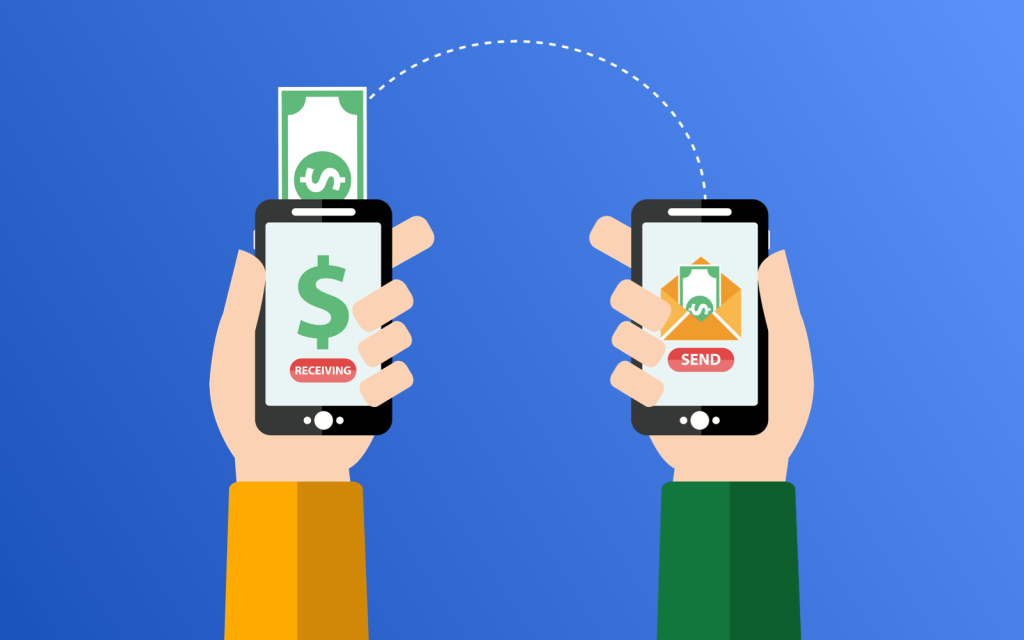
Peer-to-peer payments (P2P) allow you to transfer money from your bank account or credit card account to someone else using an app on your phone. Some of the most popular apps are Cash App, Zelle, Paypal and Venmo.
These apps are convenient and easy to use but there are risks involved.
P2P apps are not federally insured or regulated. This means that there is little protection offered to customers using the apps.
Any app can be targeted by scammers and hackers. Scammers can trick you into authorizing and sending a payment. Fraud happens when hackers gain access to your account and steal money and information without you authorizing anything.
When you use a credit card to pay you have fraud protection. Most major credit card companies offer cardholders a $0 fraud liability guarantee. Federal law limits liability for unauthorized charges to $50.00.
Most P2P apps offer little or no fraud protection. If you pay for something and never receive it most will not reimburse your money.
When you use a payment app you should think of it like you are using cash, once the payment is sent your money is gone. If you make a payment, even if you were tricked by a scammer into making the transaction you cannot cancel the payment once you have sent it. Payments happen instantly and are irrevocable.
Most P2P apps offer data encryption, fraud controls, multifactor authentication and other security measures to protect their customers. Enable all the available security features and if an app does not offer these protections don’t use it.
When Using a P2P App
Choose a reputable company and keep the app up to date. Updates provide enhancements to the app and patch security vulnerabilities.
Read the apps terms and conditions so that you fully understand how the app works and what risks are involved.
Don’t link your bank account to the payment app. Instead use a credit card if the app allows, credit cards offer more protection. Some payment apps allow you to link a credit card, others do not. For example, Zelle allows for payments to be made using a bank account or debit card. Zelle does not allow credit cards to be used. Consider the risks involved before deciding on which app to use.
Use the app to send money only to people you know personally and trust completely.
Don’t use P2P apps to purchase products online or pay bills. Use a credit card instead, which is a more secure payment method.
Be suspicious of any business or person who only accepts P2P payments.
Watch out for phishing. Scammers often try to access your account by pretending to be the P2P company or your bank. This can come in the form of an email message, text message or phone call. Don’t respond to anyone you don’t know.
Don’t provide personal information to anyone who contacts you. This includes bank account information, Social Security number, usernames and passwords and debit and credit card information.
Don’t use a search engine to look up customer service phone numbers. Scammers use fake websites to trick people into providing confidential information.
Never allow remote access to your computers, tablets or smartphones. Scammers may request remote access to your device. Once they gain access, they can steal personal and financial information and infect your device with malware.
Setup customer alerts on your financial accounts. These alerts will notify you when any unusual activity takes place.
Don’t let anyone access your phone.
Protect your smartphone with a password.
Monitor your accounts regularly. Log into your online bank and other accounts and make sure there are no charges you do not recognize or anything else that seems unusual.
Use multi-factor authentication on all of your accounts.
Don’t use public Wi-Fi for anything private or confidential this included P2P apps, banking and email.
Take your time when sending a payment. Money is transferred quickly using P2P apps. Double check everything before transferring the money.
Use a unique password for all accounts. Never use the same password twice and change the password a few times a year.
Common Scams
Seller Scams
These can take many different forms but typically the seller is offering merchandise or some type of service and requests payment through a P2P app. Once the money is sent the merchandise or service is never delivered. Don’t use P2P apps to pay for goods or services. Use another more secure method of payment.
Unauthorized Transfers
This happens when a hacker gains access to your account or device and makes a transaction that you did not approve. They may use phishing to obtain personal information and hack into your P2P or bank account. This can lead to financial and identity theft.
Overpayment Scams
This can happen when someone sends you money “by mistake” and then requests that you transfer the money back to them. Never fall for this, instead contact the P2P company to report the scam.
Bank Impersonators
A scammer contacts you pretending to be your bank. They may say that there has been suspicious activity related to your account. They may request that you send them money to ensure that your account has not been disabled or to reverse the transaction. Never fall for this. Contact your bank to report the scam.
What to do if you have been scammed or hacked using a P2P app
Contact the P2P company, your credit card company and your bank to report the problem.
Change the username, password and security questions on your accounts.
Report the scam or fraudulent activity to the Federal Trade Commission
and to the FBI